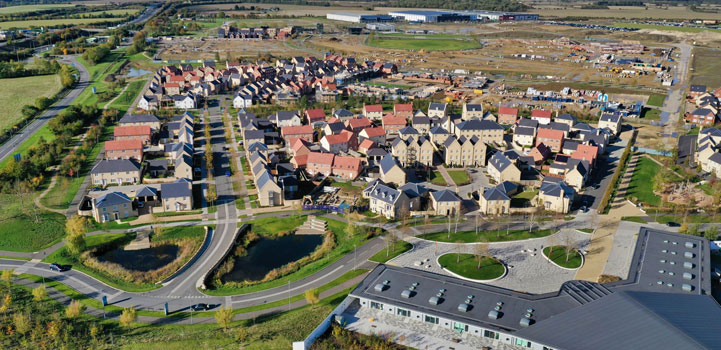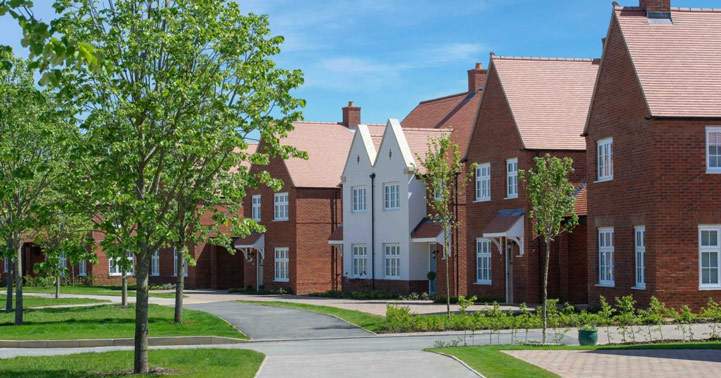What is the opportunity for investors?
What makes a good partnership?
Investors and housebuilders identified that a Partnership approach works well for both parties. Moving away from single transactions, partnerships enable investors to programmatically fund sites. Typically, they will receive a number of sites across the UK, paying sequential building costs and using broad types of funding.
Housebuilders identified that Partnerships work well because before committing to a land acquisition there is security of a pre-sale. They universally agreed that investors need to be involved much earlier and a partnership model enables that early engagement.
Programmatic funding deals are key to getting to scale for investors and they also match housebuilders’ aspirations. Housebuilders are keen to bring in partners from the beginning for new bids, to give certainty on delivery and can optimise build rates if 30% is pre-sold on a forward funding basis.
Housebuilders have been delivering houses for a long time and are well set up to do so.
They have decades of experience in buying land, taking sites through planning and delivering homes quickly.
Investors recognise that to build portfolios of sufficient scale, they will need to leverage housebuilder expertise.
Housebuilders buy land and develop - that’s what they are good at. Long-term partnerships with investors, where sites are exchanged on a programmatic basis, will significantly accelerate delivery
Jacqui Daly, Director, Residential Research
What makes a good partnership?
- EARLY INVOLVEMENT
The preference for both sides is the investor coming into the development process early. This means investors can feed into the design of homes and help fund some of the early placemaking and community aspects.
- COMMITMENT
Public statements can offer more certainty that this is a long-term strategy. Sigma and Countryside issued press releases after signing their framework agreement to deliver 5,000 homes together. The commitment allows companies to map out continuing expansion with significantly greater clarity and is good for companies’ Boards.
- RISK-SHARING
Partnerships allow risk to be distributed with each party taking a share of the costs and profits.

What is driving investment in Build to Rent Housing?
UK SFH has attracted over £3.5 billion of investment to date, despite being a relatively nascent sector. This year marked a step change in the pace of SFH investment, with nearly £1.5 billion deployed to November 2023. Housebuilders’ increasing sales to SFH will help to grow the market moving forward.
According to its latest trading statement, Barratt Developments Plc is actively increasing reservations in the private rented sector in order to drive revenue.
Q2 2023 saw the UK’s largest development deal, between Citra Living and Barratt, a forward purchase for £168m of a portfolio of 604 homes across multiple sites.
PGIM purchased a single family housing portfolio from Goldman Sachs in the North- West. The portfolio totalled 918 homes and is owned by the PGIM Real Estate UK Affordable Housing Fund. It is the largest UK SFH deal to date.
This is the second time this portfolio has traded. It previously did so under the name ‘Project Thistle’, where Gatehouse IM sold it to Goldman Sachs – the first UK single family housing portfolio of scale to transact.
In November 2023, Vistry signed a landmark partnership agreement with PRS provider Leaf Living. The investor will acquire more than 1,500 homes for PRS. This deal aligns with Vistry Group’s strategy to pre-sell around 65% of all units across its business.
Investors assess the ESG and life-cycle costs of the buildings in a way Buy to Let investors would not
Jacqui Daly, Director, Residential Research
The primary driver of SFH investment is to tap into inflation-matching rental income. SFH is intended to be owned and operated as a rental product for the long term. Portfolios are viewed as a single entity and investors are not seeking to break up the homes to be sold individually.
In addition to this, SFH can help meet criteria from investor’s ESG strategies, which adhere to the three main pillars of sustainability: Environmental, Social and Governance. Delivery of new homes for rent naturally supports an ESG strategy in the following ways:
How much investment could be directed to housebuilders' supply?
The rental market will require greater investment from institutions
The PRS has stopped growing since 2016 and there are signals that Buy to Let investors are exiting the market. Our analysis of UK Finance data shows that between December 2022 and August 2023, an average of 4,500 Buy-to-let mortgages were redeemed every month.
Assuming these lead to sales, we will lose more than half a million homes in ten years. This leaves a large supply gap that will need to be filled by new investment.
To meet demand, investors will need to leverage the expertise of existing developers and housebuilders, who already have a substantial pipeline of new homes.
Across England, there are currently 2.8 million plots over 13,900 sites, with an average site size of 196 homes.

The immediate opportunity to acquire stock
In the short term, there are 655,000 plots currently under construction, a third of which are being delivered by the ten largest housebuilders (220,000). A further 10% are being delivered by the next 40 largest housebuilders, but the greatest share (54%, 366,000) sits with small and medium housebuilders.
Arguably, this segment of delivery will be under the greatest pressure from current market conditions and should not be overlooked.
Longer-term, investors will need to partner with housebuilders and take greater development risk. Partnerships will grant investors access to housebuilders' planning pipelines and supply chains. SFH works best on large sites, and the planning pipeline is trending towards sites with 500 homes or more.
Between 2015 and 2017, 11% of homes granted full planning consent were on large sites (>500 homes). In 2022, this nearly doubled to 20% and rose to 25% in the Year to June 2023.
What are investors future aspirations?
Our recent Single Family Housing Investor Survey (September 2023), showed that most investors are looking to expand significantly in the next five to ten years.
The size of operational SFH varied between investors, from less than 100 units to over 5,000 units. More than half are looking to scale up within the next five years, with a further third looking to achieve their ambitions within the next ten years.
It took The PRS REIT plc more than five years to secure 5,000 homes, so efficient partnerships between developers and investors will be crucial in the future to meet investor’s targeted timelines.
90% of investors surveyed said they are targeting portfolios of over 2,500 units, or a value of over £1bn.
A really attractive proposition: a long-term source of inflation-protected, diversified income
Jacqui Daly, Director, Residential Research
As the market matures, many early investors who made up the largest owners of completed stock in 2017 have since been overtaken by new entrants who have scaled up faster in the last five years.
Ten of the top 20 largest owners of completed BtR in Q3 2023 are new entrants to the sector. These have predominantly been in Multifamily, but also include some SFH owners.
To grow the single family housing market, attracting new investors to the sector is key. Looking at the current pipeline, we are due to see another five new entrants to the sector once these developments complete.

Read the other articles within The Future of Build to Rent Houses – Summary Report below
.jpg)

